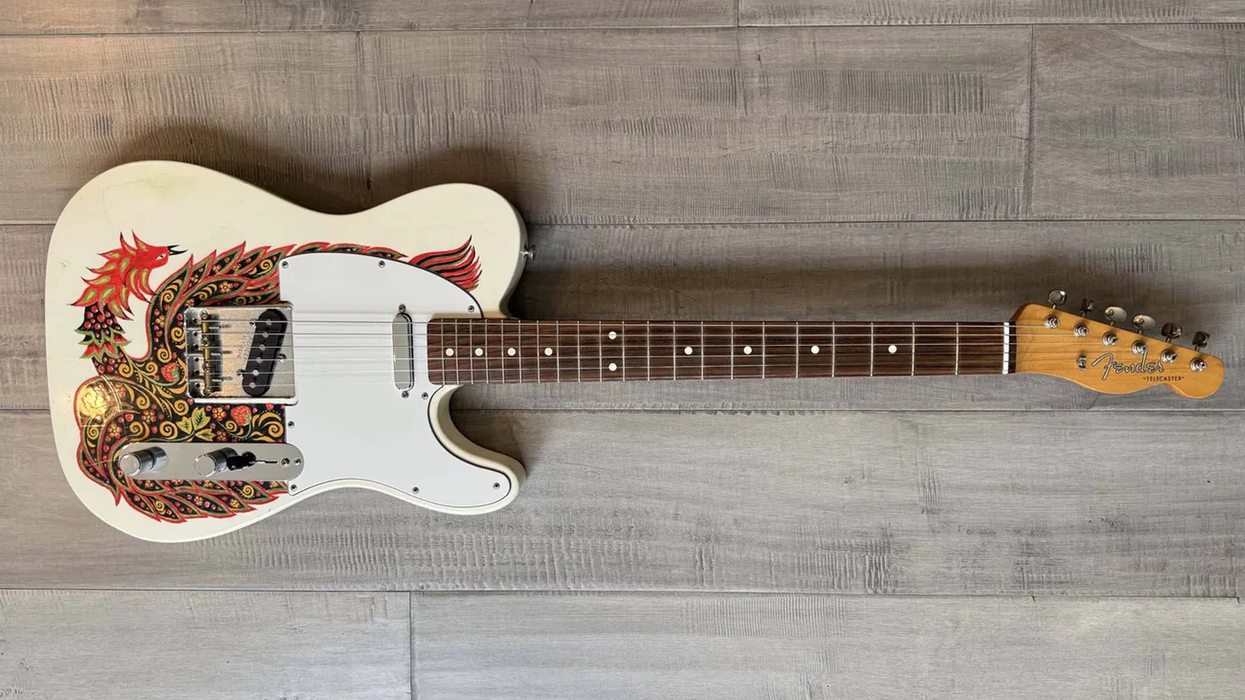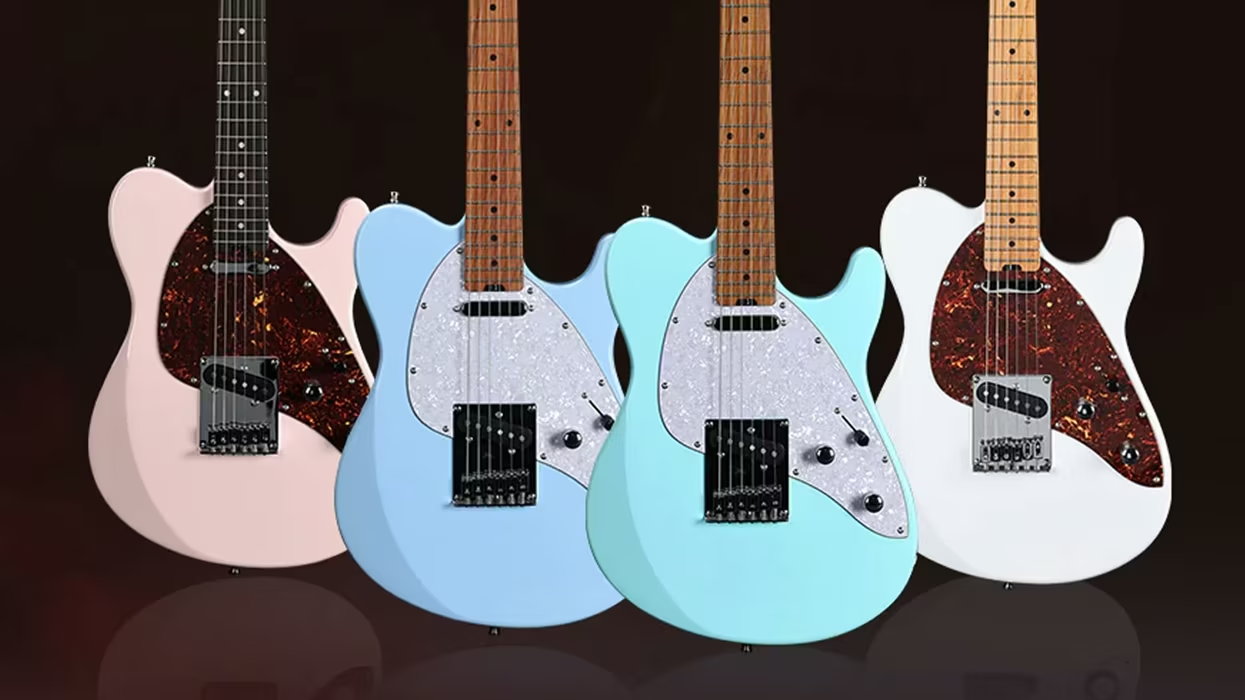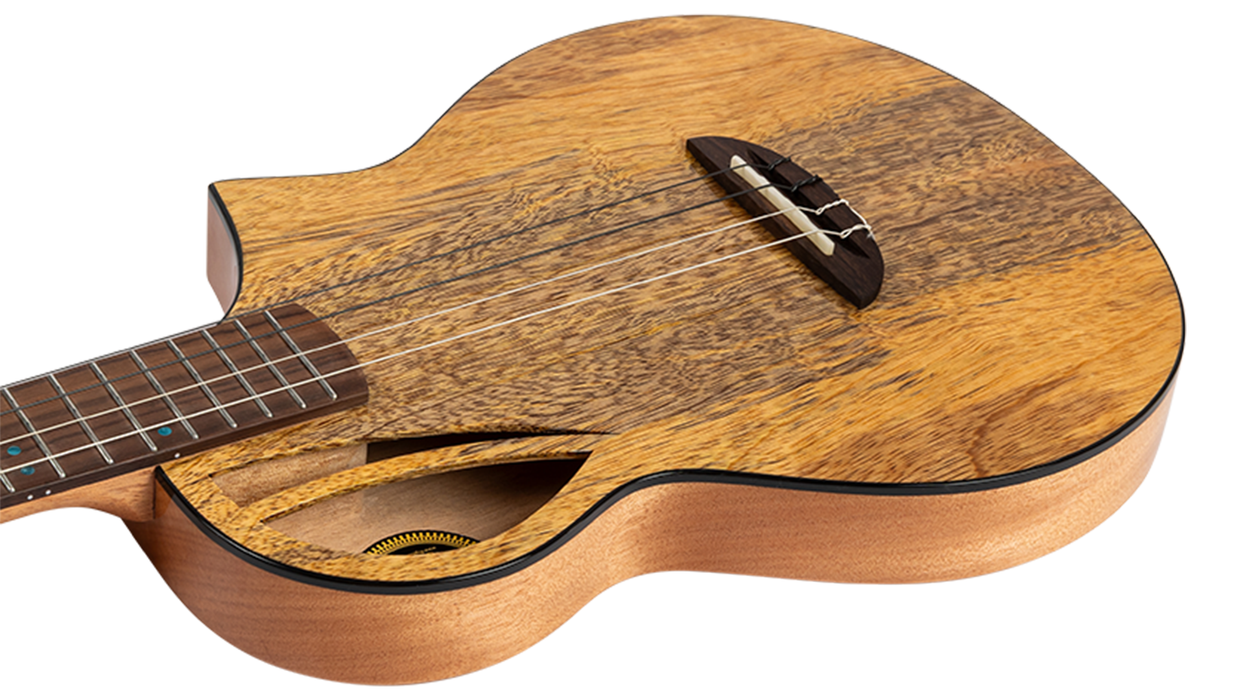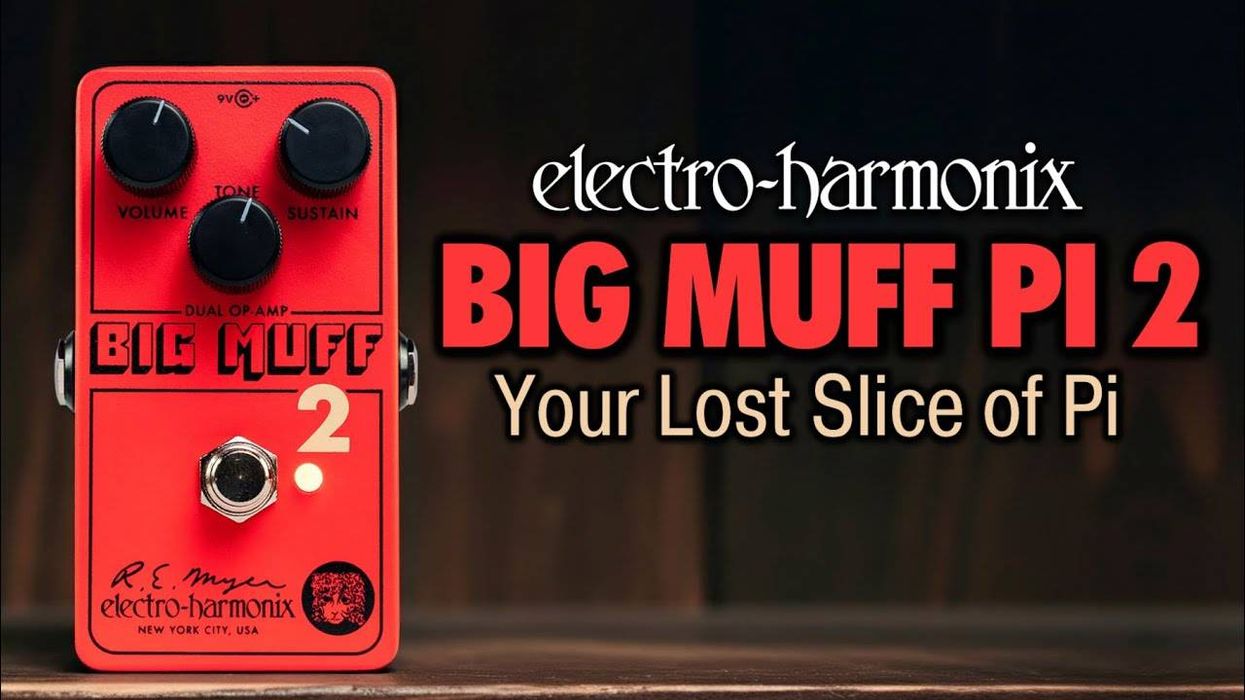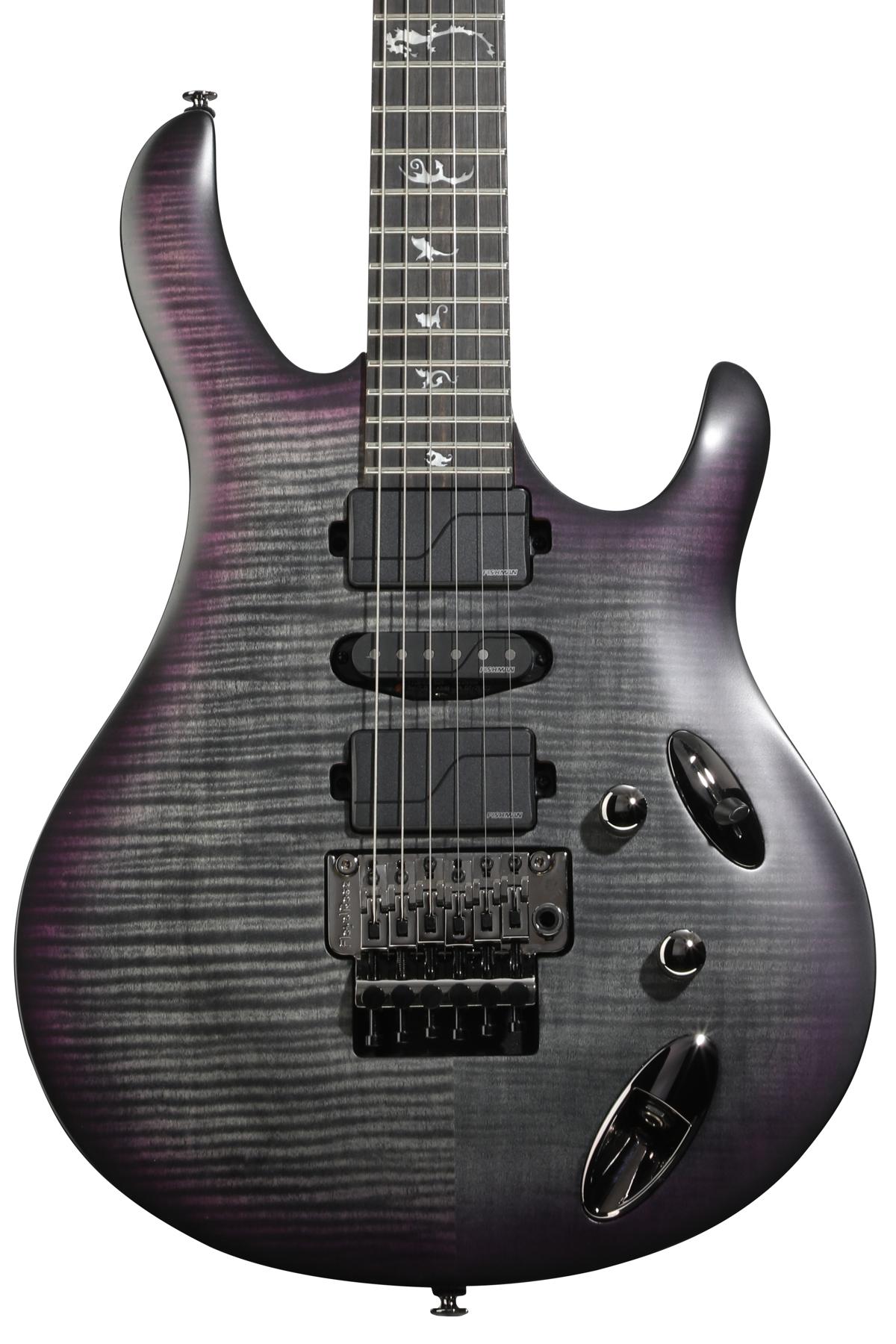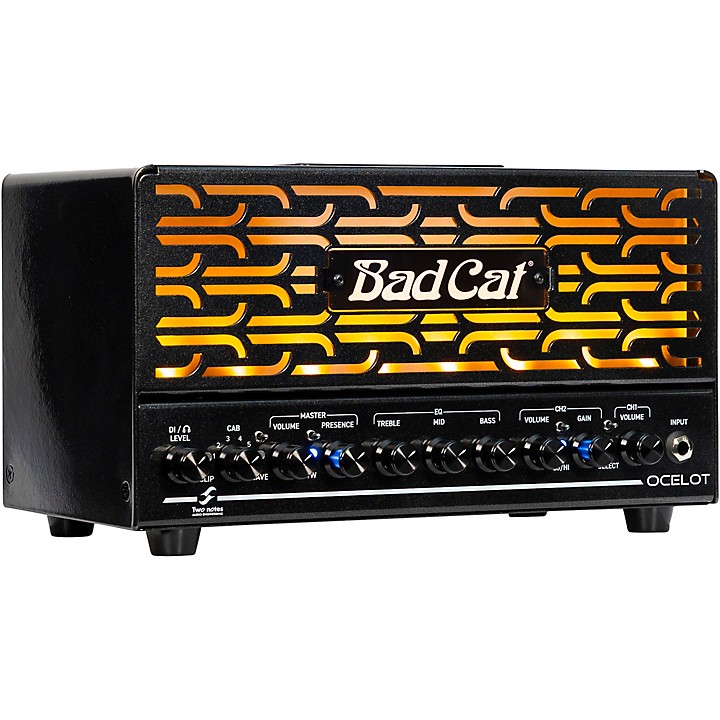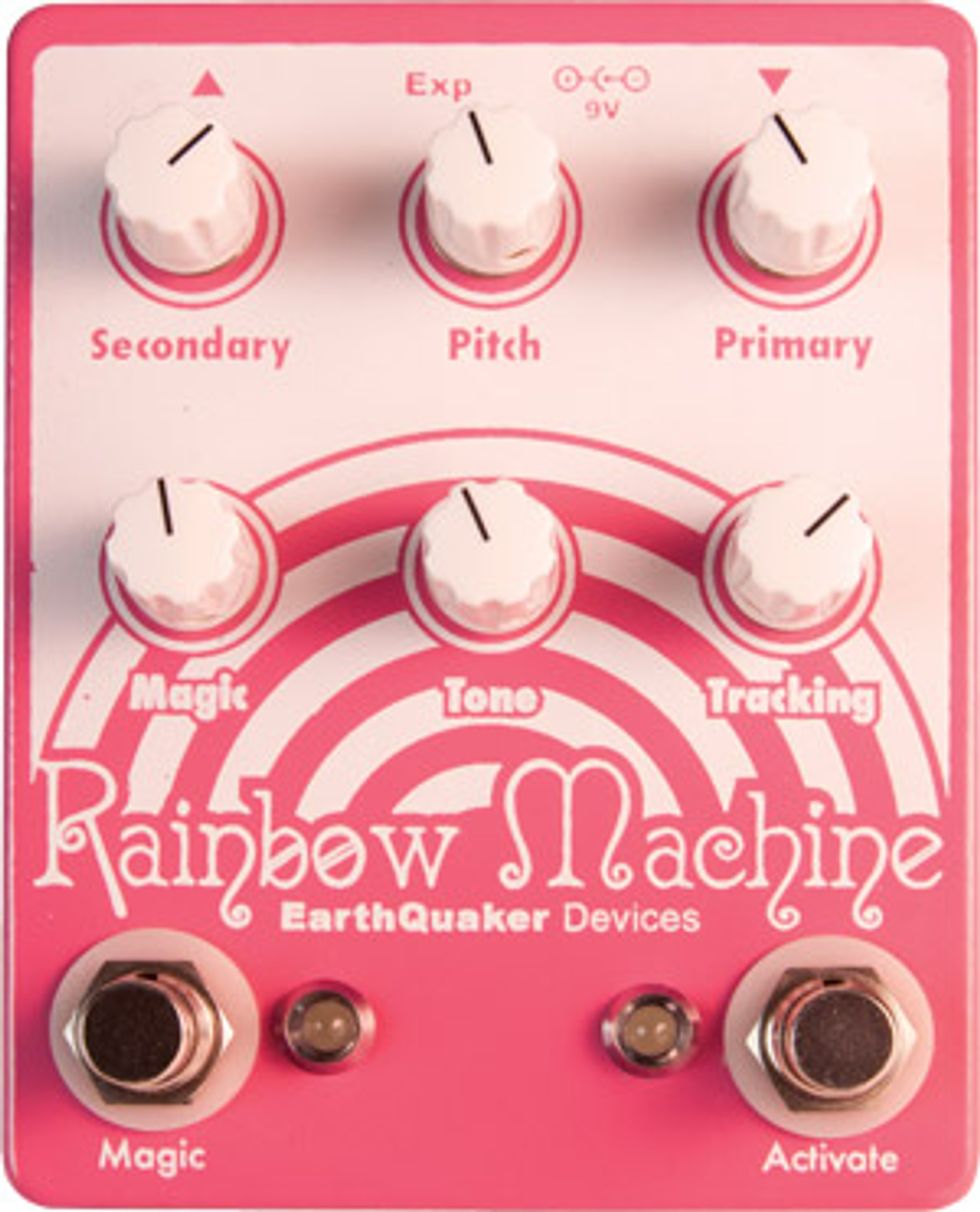
If you’re a stompbox freak, it’s hard not to be knocked out by the creative explosion at EarthQuaker Devices. In the last half decade, the little Akron, Ohio, company—started by former Black Keys road manger Jamie Stillman—and its modest line of killer fuzz and distortion boxes has morphed into a hydra-headed beast that seems to turn out new sound-manipulation tools faster than Planters cranks out peanuts.
These days, EarthQuaker’s irreverence and sonic adventurism finds the company as willing to toy with analog circuits for purists as DSP pedals for bold experimentalists. The Rainbow Machine reviewed here falls in the latter category, and it’s a great example of how EarthQuaker’s willingness to be bold and deviant and to explore underutilized tone textures results in stompboxes that stoke musical invention just as much as they fine-tune your tone.
The Rainbow Machine is a pitch-shifting, modulating, harmonizing, time-warping pedal that not only alters pitch, but also gives you the power to transform those pitch modulations using time-based controls. The effect can be as radical as an analog synth in the hands of a science fiction soundscape artist, but it can also be subtle, tasteful, and highly effective in low-key applications where it can add unexpected and delicious textures to chords and simple leads and hooks.
Six Ways over the Rainbow
The DSP-driven Rainbow Machine is not
the kind of pedal you’re likely to dial-in
right out of the box. Some controls get
more extreme on either side of high noon,
others increase in intensity as you sweep
clockwise, while others work in the opposite
direction. To top it off, most of these
functions are too deep to conveniently
define with a single label. And some are
just willfully and beautifully obscure. But
what the Rainbow Machine lacks in intuitiveness,
it pays back with power and flexibility.
A little extra time spent learning the
power and personality of each control pays
big dividends in uncovering the wealth of
sound potential in the Rainbow Machine.
The pitch control is perhaps the most vital knob. It determines the interval of the shifted signal. Whenever things get too squirrelly, returning the pitch knob to 12 o’clock is they key to dialing everything back. At noon, you get two tones in unison, tones that—depending on other knob settings—tend to have a slightly modulated reverb quality. Turn pitch all the way counterclockwise, and you get a tone that’s a fourth down from your fundamental. All the way clockwise, you get a tone that’s a third up. In between, the pitch knob yields a world of dissonant harmonies that can vary from mellow to monstrous and demented.
To the right of pitch, the primary knob adjusts the level of the pitch-shifted signal. The secondary knob controls the level of a second signal that’s an octave lower or higher than your pitch-shifted signal, depending on which side of noon you set the dial.
The tone control determines how bright or dark your pitch-shifted signal is, and it’s one of the keys to determining how subtle or radical the Rainbow Machine is in a given musical application. The tracking knob dictates the time between the fundamental and pitch shifted signals, enabling everything from arpeggio- to delay- and reverb-like effects. But the Rainbow Machine’s piece d’resistance is the magic knob, which induces intense regenerations and modulating trails that send the pedal into more cosmic realms and hallucinogenic states—it’s a control so powerful that it gets its own on-off switch.
Exploding Color
It’s best—or easiest, rather—to begin exploring
the Rainbow Machine from a more
reserved setting. And when you do, you’ll
discover that the mellowest settings are the
ticket to interesting takes on familiar effects.
Keeping the pitch knob even, adding a touch
of primary and high-octave secondary tones,
and keeping the tracking time short lends a
modulated chorus effect that gives jazzy passages
a little movement—especially with the
tone knob rolled back. With the tone knob
up, the chorus takes on a more flanger-like
color. With all three pitch-related controls at
noon, the pedal takes on a more linear chorus
sound that you can shape with a touch of
quasi-slapback echo and reverb as you sweep
the tracking control counterclockwise.
Rolling the pitch-shifted signal to a full fourth down and keeping the primary and secondary controls at mild settings yields an almost-robotic, Duane-and-Dickey harmony-lead sound, while dialing a third up and moderating levels and delay can contribute a queasy barracho feel to Tex-Mex and country chord melodies and single lines. Though I didn’t have an expression pedal to control the pitch, even manual manipulation of the control gives you access to cool, seasick, quasi pedal-steel effects that would be a blast to use on the fly.
Ratings
Pros:
Spectacular range of musical tones,
from subtle and classic to wild and
maniacal. Well built.
Cons:
Less than totally intuitive.
Tones:
Ease of Use:
Build:
Value:
Street:
$225
EarthQuaker Devices
earthquakerdevices.com
For all the sound-twisting potential of the Rainbow Machine’s pitch controls, it’s the magic knob that unlocks its most warped and extreme workings. Crank it and the tone knob up, twist the pitch control a little right of center, and turn the tracking knob counterclockwise, and the Rainbow Machine becomes a teleportation device—generating the kind of star-trail, fade-to-dream sonics that you hear in the intro to the Butthole Surfers’ “Who Was in My Room Last Night.” Yet, for all the narcotic psychosis unleashed by the magic knob, with tone and magic set less aggressively the Rainbow Machine will just as easily approximate an Echoplex-style short delay, replete with tape-warble-like modulation and an ethereal feedback trail.
The Verdict
The enormous range of unique, practical,
and downright bonkers sounds within
the Rainbow Machine could wear out
even the most tireless knob tweaker. This
wealth of sounds makes it an ideal studio
tool that can transform hooks and solos
from ordinary to arresting. It’s easy to
imagine the Rainbow Machine as a show-stopping
live device, too—particularly
with an expression pedal in the mix. But
for all its power to stop a listener in their
tracks, some of the Rainbow Machine’s
most beautiful sounds—like the modulated
chorus and slapback—are the most
familiar. And the Rainbow Machine does
a remarkable job of making those tones
just bizarre and left-of-center enough to
inspire double takes. We’ve gotten used to
such surprises and twists of reality from
EarthQuaker, but even by their lofty
standards, the Rainbow Machine is one
very deep bag of tricks.







![Rig Rundown: Russian Circles’ Mike Sullivan [2025]](https://www.premierguitar.com/media-library/youtube.jpg?id=62303631&width=1245&height=700&quality=70&coordinates=0%2C0%2C0%2C0)







